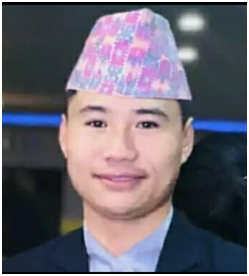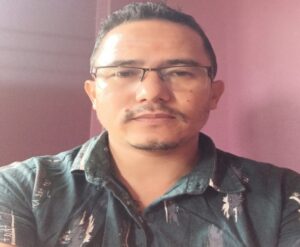
Context
During my university studies, the idea of crafting the finest research paper for my master’s consumed my dreams, deeming it the noblest facet of my academic journey. Despite my fascination with the term “thesis,” I initially grappled with a clear understanding of it. It felt akin to envisioning the construction of a cosy dream house or contemplating an ethereal place. However, as the actual process of thesis writing commenced, it proved to be more challenging than anticipated. I posit that this difficulty is the primary reason many master’s students perceive research paper writing as elusive. Some abandon the endeavour, while others procrastinate until the final deadline, attempting to persuade supervisors to accept incomplete papers. There are even instances where students resort to copying others’ work.
This issue has triggered extensive discussions among teachers and academicians, scrutinized and analyzed from a top-down perspective. While existing research on the matter provides valuable insights for students and educators alike, there remains a dearth of students’ narratives detailing their struggles and strategies—an approach from the bottom up. In this article, I aim to offer my perspective on thesis writing, elucidating how I surmounted challenges, conducted research, and presented findings in a methodical and structured manner.
My Experiences with Thesis Writing
Since writing a research paper was entirely new to me, exposure from teachers was crucial to constructing a fundamental concept of academic writing, the writing process, and finding sources. The theories and principles of writing a research paper were challenging. Though I understood the language to some extent, penetrating the content left me with a profound sense of emptiness, causing anxiety. However, determined teachers’ exposure and guidance helped mitigate my struggles. After completing the third semester, I became acquainted with terms like qualitative and quantitative research design, research objectives, questions, literature review, methods, discussion and analysis, findings, and conclusions. Despite this, I lacked the necessary skill to write, making my experience of writing a research proposal akin to a crow in the cloud.
When I began preparing my first proposal, my mind was blank. Determined to start writing, I sat in front of my laptop, appearing confident as if I were embarking on the greatest task ever. My niece, who was reading beside me, sensed my seriousness. Despite fifteen to twenty minutes of pondering, my mind remained empty; not a single word appeared on the laptop screen. Frustration set in as I questioned my competency, growing restless. I began talking to myself, “What the heck! My competency is that I cannot write a sentence. How can I ever write a thesis?” Despite the anxiety, the notorious journey of writing the proposal finally began as follows.
I am sitting on a chair to draft a thesis proposal. My mind remains blank after almost twenty minutes of contemplation. Questions persist: what to write? What? Is it windy outside? I observe the fluttering curtain. The wooden chair I occupy supports me, and on the table, stacks of books stand. As I start jotting down words, a sense of purpose eludes me. Does it make sense? No, it does not. But who cares? Someone might laugh at my writing, unaware that I’m simply venting my frustration with the thesis proposal.
I powered down my laptop and exited the room. For a week, I resisted the urge to write. After that interval, I powered up the laptop and revisited the aforementioned text. Much to my surprise, whatever the text was, it infused me with confidence, evoking a sense of authenticity I hadn’t experienced since my school and college days—excluding exam writing. I felt a sense of pride in my ability to produce something, regardless of its content. This brief text served as motivation, inspiring me to dedicate unwavering effort to articulate my ideas and thoughts on paper. And so, my journey continued…
After two years of continuous effort to write a research paper and unexplainable support from my supervisor, participants, and other teachers, I managed to produce around two hundred pages of a research draft. My supervisor boosted my confidence with the statement, “Rai Bhai, you have a good insight into research work. Research is a process of learning, unlearning, and relearning. How much you’ve learned is sufficient for your level. Now, proceed to the viva. Get ready for the presentation with slides.” His statement filled me with boundless happiness as I felt I had won the battle through rigorous work, and despite his inflexible schedule, my supervisor had done his best to guide me. I still recall him calling me for an online meeting through Zoom around half-past eleven at night.
“Well, Mr. Rai, you are building castles in the air,” said the external supervisor while flipping through the pages of my research work after my presentation. He then prescribed a list of improvements. My mouth went dry with the prescription because I had foolishly convinced myself that no further editing was needed, and my research was a flawless diamond. However, with the remarks of the external supervisor, it seemed no more than a corn husk. I looked at my supervisor with a perplexed expression, and he gestured for me to be patient. It took an additional two months to align with the suggestions of the external supervisor. Eventually, my corn husk received hard binding. I call my research work a husk because I am now unsatisfied with what I wrote back then.
Suggestions for Writing Thesis
Whether the journey is easy or hard, footprints are always left behind. Following someone else’s footprints can make the journey easier. In essence, I would like to share my footprints with readers, especially master’s students preparing to write a thesis and teachers dealing with similar student issues.
How to Explore the Issue of Writing?
Recognizing the problem proves to be the most formidable hurdle for students. In the absence of a precise understanding of the challenges pertinent to their respective disciplines, students encounter a state of paralysis when tasked with writing. Even at the master’s level, numerous students grapple with identifying issues and await guidance from instructors for topic selection. While there is no inherent fault in topics provided by instructors, researching any of them is deemed acceptable. However, my observations indicate that students often encounter difficulty in critically presenting robust arguments, justifications, and references. They frequently lean on the perspectives of others, struggling to independently generate knowledge.
If we analyze the master’s degree theses written so far, the majority of students tend to begin with the historical background of English language teaching in Nepal. For example, “English education was formally introduced by Prime Minister Jang Bahadur Rana. . .” Instead, starting with a statement like, “Representation of cultural identity has become a buzzword in language teaching and learning…” Why does this happen? The answer is simple: students are often not aware of the issues and problems they are going to investigate.
Identifying the issues and problems in writing is a complex task but not impossible. In my case, I explored the issue through interdisciplinary reading and discourses. Students should engage in reading diverse texts and reflecting on their ideas, finding connections between them. Participating in conferences, seminars, and professional discourses can also be beneficial. If students work as teachers, they can easily explore issues in the workplace. For example, they can examine how social constructs hinder a child’s learning or how an English language teacher’s professional ideology influences a child’s learning. Such issues often arise in the workplace. Therefore, issues and problems are around us but require a meticulous study of the situation and context.
Early Bird Catches the Worm
Procrastination can prove detrimental to the writing process. In my case, I immediately started writing even though I didn’t have anything specific to write about. I provided my first proposal without editing, and, as a result, the quality of my writing suffered, as you might expect. Creating a draft allowed me to brainstorm ideas, and I didn’t hesitate to write whatever came to mind, irrespective of spelling errors, grammatical mistakes, or inappropriate vocabulary. During this phase, unfortunately, I resorted to copying others’ ideas and sentences, falsely claiming them as my own. I even copied entire paragraphs without concern for plagiarism, as my primary objective was to acquaint myself with various writing techniques.
One day, I confronted myself with the question of how long I could continue copying and whether I was capable of generating my writing. That pivotal moment became the catalyst for me to gather the courage and embark on crafting my original content. Within a month, I composed a twenty-five-page proposal. Seeking feedback from my teacher, I was met not with mere suggestions for improvement, but rather a barrage of probing questions. Queries such as “What is your intended focus on this topic?” “What drives your motivation to write?” “What objectives do you aim to achieve?” and “How do you envision reaching these objectives?” forced me to reevaluate my approach. In response, I opted for a different topic and resumed my writing endeavours. This early intervention proved crucial; otherwise, I might have succumbed to frustration had I delayed my start.
Autonomous Reading and Writing
At this stage of writing, I began evaluating other research works with questions in mind and a pencil in hand while reading. For instance, how has the author raised the issue? What supporting literature have they mentioned? What methods and procedures have been followed? This process provided me with insights into the methodological aspects of writing.
Regular Follow-up with Supervisor
My strength during thesis writing stemmed from the unwavering support of my supervisor and teachers. I maintained regular communication with them, receiving invaluable step-by-step feedback. Concurrently, I sought guidance from additional teachers, whose input proved instrumental in advancing my writing. One teacher played a pivotal role in helping me formulate insightful questions to delve into the core issues, while two others provided mentorship on formatting, citations, and references. My supervisor played a crucial role in refining various aspects, from polishing my language to structuring ideas within the prescribed framework. Additionally, I received training on methodologies, enhancing the overall quality of my work. This experience underscored the collective effort involved in writing, highlighting the invaluable contribution of academicians.
Post-Thesis Achievements
While pursuing my master’s degree and undertaking the challenging task of thesis writing, I observed that many of my peers regarded it as a mere ritual required for completing their studies, attaching little significance to its relevance in their post-masters life. For them, it became a task that could be completed hastily as the deadline loomed. This perspective not only presented a problem but also posed a threat to the entire academic culture. I share these observations not merely from an analytical standpoint but from my personal experience. By the time I completed my final thesis, I had rewritten and re-edited it twenty-two times—a process similar to churning curd to make ghee. This arduous journey solidified my belief that academic work is inherently sensitive, rigorous, and painstaking.
Discussing my achievement, thesis writing has illuminated the importance of academic writing, a crucial skill for my profession in teaching. As a teacher, effective writing is paramount, and I believe the certificate gains true value when accompanied by essential skills. Evaluating my teaching before and after completing the thesis, I notice a significant difference in my delivery, techniques, and guidance to students—an accomplishment in itself. Additionally, I successfully built relationships with academicians whose support has further fueled my passion for reading and writing. Ultimately, I have developed skills that have granted me both personal and economic freedom.
Conclusion
In conclusion, my experiential insights suggest that authentic transformation frequently necessitates enduring a period of trial. Analogous to the profound metamorphosis undergone by a caterpillar in its transition to a resplendent butterfly, or the ecdysis observed in the skin-shedding process of a snake, an academician is also required to undergo a comparable transformative process. The optimal locus and method for initiating this profound journey of metamorphosis lie in the composition of a master’s thesis.
About the Author: Dasarath Rai teaches English at Ideal Model School, Dhobighat, Lalitpur. He has accomplished a Master’s Degree in English Education from Mahendra Ratna, Campus, Tahachal, Kathmandu. He is interested in teacher professional development, multiculturalism, cultural identity, and materials development in language education.


 Prologue
Prologue